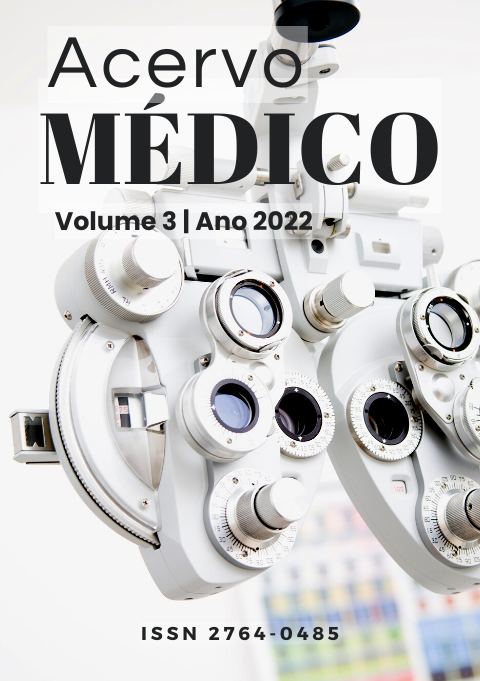Crise convulsiva febril em crianças: uma revisão narrativa
##plugins.themes.bootstrap3.article.main##
Resumo
Objetivo: Descrever e atualizar sobre as Convulsões Febris, formas de diagnóstico e tratamento em crianças. Revisão bibliográfica: As convulsões febris são convulsões presentes em um momento febril (temperatura acima de 38°C) em crianças, cujo foco febril não seja infecções do sistema nervoso central, meningites e alterações metabólicas. Em quase todos os casos, as crises febris simples têm um prognóstico benigno e não requerem uma investigação diagnóstica extensa. Convulsões febris complexas requerem uma avaliação clínica mais detalhada e exames adicionais podem ser indicados devido a um maior risco de causas detectáveis e um risco ligeiramente aumentado de desenvolver epilepsia posteriormente. Considerações finais: As CF são manifestações epilépticas benignas na infância que ocorrem entre os 6 meses e os 5 anos de idade e afetam cerca de 2–5% das crianças. As convulsões febris geralmente não têm efeitos adversos significativos no desenvolvimento cognitivo e motor. A profilaxia anticonvulsivante não é recomendada de rotina para crises simples e complexas, pois seus efeitos colaterais superam os benefícios dessa prática.
##plugins.themes.bootstrap3.article.details##
Copyright © | Todos os direitos reservados.
A revista detém os direitos autorais exclusivos de publicação deste artigo nos termos da lei 9610/98.
Reprodução parcial
É livre o uso de partes do texto, figuras e questionário do artigo, sendo obrigatória a citação dos autores e revista.
Reprodução total
É expressamente proibida, devendo ser autorizada pela revista.
Referências
2. ATEŞOĞLUA M, et al. Sociodemographic risk factors for febrile seizures: A school-based study from Izmir, Turkey. Seizure: European Journal of Epilepsy, 2018; 61: 45–49.
3. BRITO KB, et al. Convulsões. Revista Pediátrica (SOPERJ), 2017; 17(supl.1):56-72.
4. CANPOLATA M, et al. Investigating the prevalence of febrile convulsion in Kayseri, Turkey: An assessment of the risk factors for recurrence of febrile convulsion and for development of epilepsy. Seizure, 2018; 55:36–47.
5. DESIDERIO RPL. Crisis febriles. Rev. cubana Pediatr, 2018; 90(4): e682
6. FERNÁNDEZ CR. De las convulsiones febriles a las epilepsias relacionadas. Bol Pediatr, 2019; 59: 73-78.
7. FISHER RS, et al. Instruction manual for the ILAE 2017 operational classification of seizures types. Epilepsia, 2017; 58(4): 531-542.
8. INOUE M, et al. Change in the strategy for prophylactic diazepam use for febrile seizures and the impact on seizure recurrence within 24 h. Seizure: European Journal of Epilepsy, 2020; 75: 70–74.
9. LASCANO PP, et al. Etiología y factores asociados a las crisis convulsivas febriles en Ecuador. Bol pediatr, 2017; 57: 33-38.
10. LI XC, et al. Clinical characteristics and electroencephalogram analysis of levetiracetam in the treatment of children with febrile seizure recurrence. Exp Ther Med, 2017;14(3): 2015-20.
11. MACHADO MR, et al. Crise febril na Infância: Uma revisão dos principais conceitos. Residência Pediátrica, 2018; 8(supl 1): 11-16.
12. MÁRQUEZ MAC, et al. Crisis Convulsivas Febriles: Revisión Integral. Acta Pediátrica Hondureña, 2018; 8: (2).
13. MEWASINGH LD, et al. Current understanding of febrile seizures and their long-term outcomes. Dev Med Child Neurol, 2020; 62(11): 1245-1249.
14. OFFRINGA M, et al. Prophylactic drug management for febrile seizures in children. Cochrane Database Syst Rev, 2017; 2:CD003031.
15. POKHREL RP, et al. Study of Febrile Seizure among Hospitalized Children of a Tertiary Centre of Nepal: A Descriptive Cross-sectional Study. J Nepal Med Assoc (JNMA), 2021; 59(238):526-530.
16. PUJAR SS, et al. Long-term prognosis after childhood convulsive status epilepticus: a prospective cohort study. Lancet Child Adolesc Health, 2018; 2: 103–11.
17. RODRIGUEZ DA, ESPINOSA LEB. Crisis Convulsivas Febriles en Niños: Re-visión Narrativa de la Literatura. Revista de Medicina Clínica, 2019; 3(1):49-56.
18. SHRESTHA B, et al. Febrile Seizure in Children Attending a Tertiary Care Centre in Western Nepal: A Descriptive Cross-sectional Study. JNMA J Nepal Med Assoc, 2021; 59(236): 331–335.
19. SMITH DK, et al. Febrile Seizures: Risks, Evaluation, and Prognosis. Am Fam Physician, 2019; 99(7): 445-450.
20. STELZLE D, et al. Febrile seizures in an urban Tanzanian population: lessons learned from a community-based random cluster survey. Tropical Medicine and International Health, 2021; 26(4): 492-502.
21. WHELAN H, et al. Complex febrile seizures-A systematic review. Dis Mon, 2017; 63(1): 5-23.

